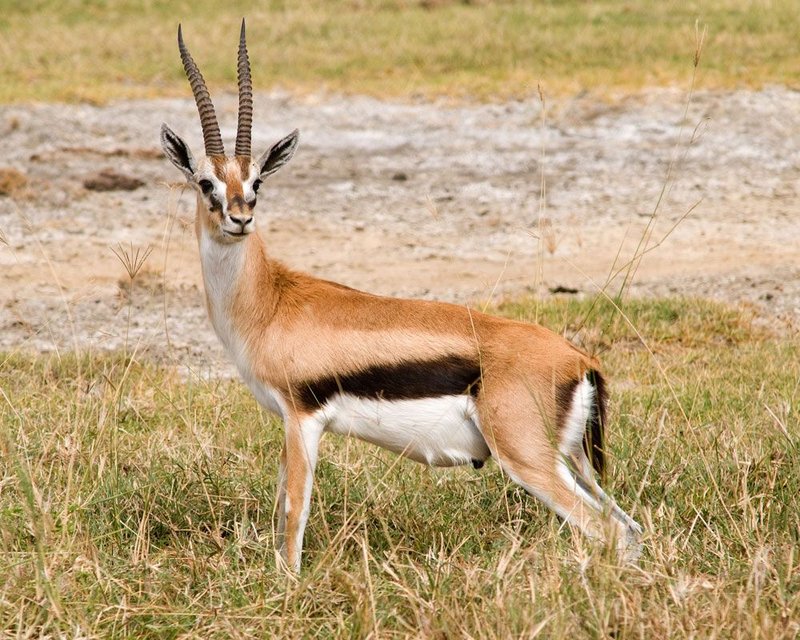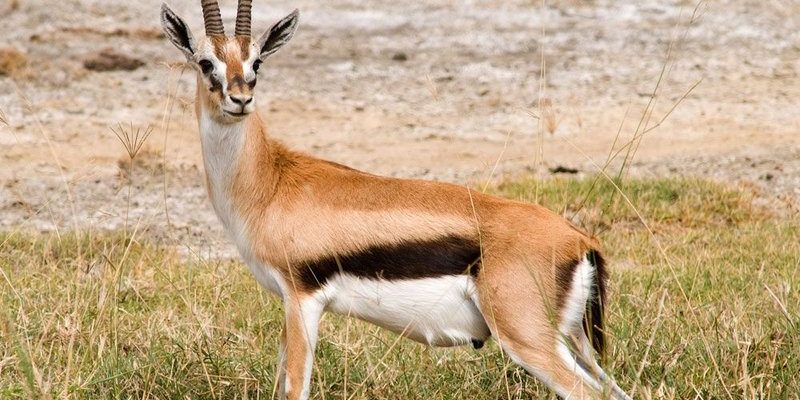
Let’s break it down. Gazelles are herbivores, primarily munching on grass and leaves. They’re more likely to run from a threat than to stand and fight. But like any animal pushed into a corner, they can respond defensively. Imagine a cornered rabbit—while it may seem cute and harmless, it’ll bite if it feels endangered. Similarly, gazelles have their own ways of reacting when they feel threatened. So, can they be dangerous to humans? Let’s dig deeper into their behavior and the circumstances that could lead to danger.
Understanding Gazelle Behavior
Gazelles belong to the Antelope family and can be found across Africa and parts of Asia. They’re social animals, often seen traveling in herds. This group behavior helps them stay safe from predators like lions or hyenas. When alert, gazelles use their keen sense of hearing and sight to detect danger. Their first line of defense? They bolt at high speed, capable of reaching up to 60 km/h (37 mph).
You might be wondering, “If they’re so good at running away, why would they ever become dangerous to humans?” Here’s the thing: in rare situations, a gazelle might feel cornered or threatened. If someone approaches too closely, particularly in a confined space or during mating season, a gazelle could react aggressively. They are equipped with strong hooves and can deliver powerful kicks, which is surprising considering their delicate appearance.
When Gazelles Feel Threatened
Imagine you’re a gazelle in the wild. You’re munching on some grass, enjoying the sun, when suddenly, a loud noise scares you. Your natural instinct is to flee. If escape isn’t possible—maybe you’re surrounded by people or trapped by a fence—your anxiety can escalate. In these moments, a gazelle might feel cornered and lash out.
While attacks on humans are extremely rare, it’s essential to recognize that any wild animal can behave unpredictably when frightened. A gazelle in distress could kick out or charge at someone it perceives as a threat. So, if you ever find yourself near one, it’s best to keep a respectful distance. Remember, they’re not domesticated animals and don’t understand our intentions.
Encounters Between Humans and Gazelles
Most interactions between gazelles and humans happen in wildlife parks or reserves, where people come to enjoy and observe wildlife. In these environments, gazelles are accustomed to seeing humans, but that doesn’t mean they’re comfortable being approached. Some visitors might try to get too close for a photo or an interaction, which can be alarming for the animals.
It’s crucial to understand that while gazelles can appear docile, they are still wild creatures. For example, there have been reports of people getting too close to a gazelle’s territory. If a gazelle feels threatened, it may react aggressively. This is why parks often have rules about how close you can get to wildlife—preserving both animal and human safety.
Signs of Distress in Gazelles
Understanding how to read a gazelle’s body language can help avoid potential conflicts. When a gazelle feels threatened, it may start to display specific signs, such as:
- Stiffened posture: The gazelle may stand very still, looking alert.
- Flicking tail: A fast-moving tail can indicate stress.
- Pawing the ground: Gazelles sometimes paw at the earth when they feel the need to take flight or defend themselves.
If you see these behaviors, it’s your cue to back off and give the gazelle space. Just like you wouldn’t want to push a scared dog into a corner, the same goes for gazelles. Respecting their space helps keep everyone safe.
In conclusion, while gazelles are not typically dangerous to humans, they can become aggressive if they feel threatened or trapped. Their natural instinct is to flee, but when cornered, they may react defensively. Understanding their behavior and recognizing the signs of distress is vital for anyone visiting wildlife parks or areas where gazelles roam.
So, the next time you see a gazelle, take a moment to appreciate its beauty from a distance. By respecting these incredible creatures and their space, you’ll ensure a peaceful encounter for both you and the gazelle. After all, in the wild, it’s all about coexistence, not confrontation. Stay curious and watchful; nature has a way of surprising us!

